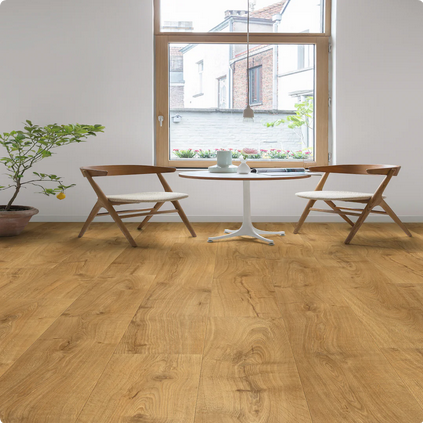
Author, Written by: Bledy (Installation Expert and Technical Writer)
Attics and loft conversions are becoming increasingly popular in UK homes, offering valuable extra living space. Whether you are turning your attic into a guest room, home office, or cosy retreat, flooring plays an essential role in comfort, durability, and overall design. Because attics and converted spaces often come with unique challenges such as sloped ceilings, limited natural light, and varying subfloor conditions, choosing the right flooring is key.
Things to Consider Before Choosing Attic Flooring
1. Weight and Structure
Attics may not have the same structural strength as lower floors, so flooring materials need to be lightweight yet sturdy. Always confirm with a builder that your joists can handle the load.
2. Insulation and Acoustics
Attics can be noisy and prone to heat loss. Floors should help insulate the space and minimise sound transmission to rooms below.
3. Temperature Fluctuations
Converted lofts may experience hotter summers and colder winters. Flooring that handles expansion, contraction, and insulation well will perform best.
4. Style and Functionality
Since attics often have character features like dormer windows or beams, flooring should enhance the charm while remaining practical for its use.
Best Flooring Options for Attics and Conversions
1. Engineered Wood Flooring
Engineered wood is a popular choice because it combines real wood beauty with structural stability. It can handle temperature variations better than solid wood and adds warmth and character to attic rooms. A lighter oak or natural finish works well to brighten spaces with limited light.
2. Laminate Flooring
Durable, cost effective, and available in many designs, laminate flooring is ideal for attic conversions used as guest rooms, playrooms, or studies. It is lightweight and easy to install, often with click lock systems that suit DIY projects.
3. Luxury Vinyl Tile (LVT)
LVT is a versatile option that handles temperature fluctuations well and provides comfort underfoot. It is also sound absorbent, which helps reduce noise transfer to rooms below. Its wide range of finishes, from stone to wood look, allows for design flexibility.
4. Carpet
If your attic is being turned into a bedroom or lounge area, carpet offers softness, warmth, and excellent sound insulation. It makes the room feel cosy but may not be ideal for workspaces where durability and easy cleaning are more important.
5. Cork Flooring
Eco friendly and naturally insulating, cork flooring works well in converted spaces. It helps regulate temperature and absorbs sound, making it a good option for a quiet study or meditation room.
6. Vinyl Sheet Flooring
For budget friendly attic renovations, vinyl sheets are lightweight and easy to fit. They are also moisture resistant, which can be beneficial in lofts with less ventilation.
Practical Tips for Attic Flooring
-
Use lighter tones to make the space feel bigger and brighter.
-
Add rugs for warmth and softness without increasing floor weight.
-
Install underlay to improve insulation and reduce sound transfer.
-
Check building regulations before installation, especially if converting into a habitable room.
Overall, it may be said
Flooring is one of the most important choices in any attic or loft conversion. Engineered wood and laminate bring warmth and style, LVT and cork add resilience and comfort, while carpet creates a cosy retreat. The right choice depends on how you plan to use the space and the structural conditions of your home. With thoughtful selection, your attic can become a stylish, functional part of your living space that feels just as inviting as the rest of your home.
About Author:
Bledy is a flooring installation expert with over 15 years of experience. He writes easy to follow guides and tips to help homeowners and professionals with flooring projects.
